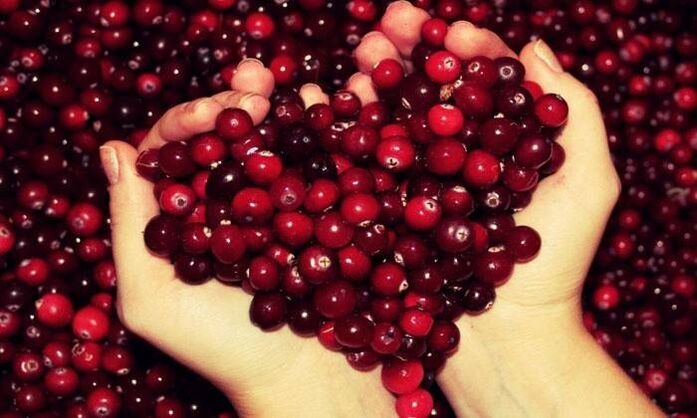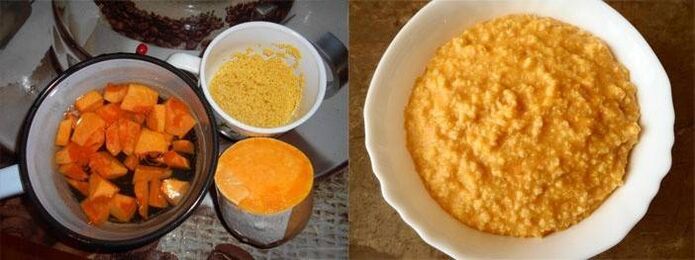Psoriasis is a non-infectious dermatological disease that quickly becomes chronic. During the period of exacerbation of psoriasis, raised, scaly rashes appear on the surface of the skin, causing a lot of inconvenience. Typical areas for psoriasis are the knees, elbows, and scalp. The spread of the disease occurs throughout the body. A diet for psoriasis can ease the course of the disease. Statistics say that 70% of sufferers are young people under the age of 20, but absolutely all age categories are prone to psoriasis.
Dietary rules for psoriasis
The diet for psoriasis is a medical food, which is recommended to follow to avoid relapses in the patient. Patients with psoriasis need to control their emotional state, monitor the functioning of the stomach and the entire gastrointestinal tract, eat in small doses (at least five times a day), eliminate allergens and increase the amount of liquid consumed. Daily stools are an unbreakable rule for psoriasis patients. Stagnation of food in the body contributes to the exacerbation of psoriasis.

To maintain the correct water balance in psoriasis, you must:
- Drink 1, 7-2 liters of purified water a day with the addition of a small amount of lemon juice.
- Reduce the consumption of black green tea. Increase the amount of herbal teas, especially chamomile, flax seed decoction.
- Include fresh juices (carrots, spinach, celery, apples, parsley, beets) in the diet.
Basic kitchen rules for psoriasis:
- Eliminate fried and fatty foods from the menu. A special place is occupied by boiled, steamed or baked dishes in a food sleeve.
- Reduce the amount of salt.
- Increase your intake of fermented dairy products, preferably homemade.
- Limit the amount of seasonings in your meals. For health benefits, replace them with lemon juice or a specially prepared sauce (yogurt + herbs + garlic + mustard).
What can and can't psoriasis patients eat?
The diet for psoriasis involves full control and adherence to the basic rules of a healthy diet. Few can limit themselves, give up their favorite foods, but during the period of exacerbation of psoriasis, this is an absolute necessity. The disease is not completely cured. Its course cannot be changed using only medications and not following a dietary treatment. Knowledge of the food products allowed for consumption, which should be completely excluded during an exacerbation of psoriasis, can alleviate the patient's well-being and reduce the main symptoms.
List of allowed and prohibited products
With psoriasis, you must adhere to these dietary rules:
- Eat more vegetables (lettuce, parsley, dill, green onions), fresh fruits, greens. They contain a whole reservoir of vitamins.
- Eat boiled or steamed fatty fish dishes (salmon, salmon) more often.
- Eat a lot of porridge: buckwheat, rice, oats, wheat or any other.
- Add vegetable oil that contains PUFA to food.
- Saturate the diet with lingonberries or blueberries. These little balls have long been considered the leaders among berries for relieving psoriasis symptoms.

People with such a disease should be categorically excluded from the diet or reduced:
- Consumption of coffee, strong teas.
- The amount of fatty meat.
- The amount of alcohol consumed.
- Consumption of spicy or salty seasonings, vinegar.
- The amount of honey, sugar, baked goods ingested.
- The proportion of strong meat broths, sauces in the diet.
- Eat any smoked product.
Sample menu for a week
Having compiled a diet menu for a week (5 days), it is easier to see what foods should be bought and avoid emergency snacks with forbidden foods for psoriasis. Diet in the treatment of psoriasis is essential. Failure to comply with it aggravates the course of the disease. Remember to drink 1 glass (or more) of cold purified water between meals. Dinner should be no later than three hours before bedtime.
Monday
- Breakfast: buckwheat porridge + a small piece of butter + nuts. Weak tea with a slice of hard cheese.
- Second breakfast (after 2 hours): an apple, banana or other fresh fruit that does not cause allergies.
- 3rd breakfast (after 2 hours): cottage cheese seasoned with low-fat sour cream + fruit.
- Lunch: salad (fresh vegetables + a tablespoon of olive oil), vegetable soup, garnish with a piece of low-fat boiled meat, bread.
- Afternoon snack - fruit.
- Dinner: porridge with stewed vegetables + bread. After 1. 5 hours, kefir + low-fat biscuits.
Tuesday
- Breakfast: oatmeal with raisins and a piece of butter, bread, 1 glass of rosehip drink.
- Second breakfast - low-fat kefir.
- 3rd breakfast - fresh fruit.
- Lunch - salad (fresh vegetables, dressing with olive oil and lemon juice). Second chicken broth soup. Puree with a slice of steamed fish. Bread.
- Afternoon snack: cottage cheese with fresh fruit, seasoned with yogurt.
- Dinner: buckwheat porridge with meatless butter + steamed vegetables.
Wednesday
- Breakfast: a two-egg omelette. Cocoa, butter and hard cheese sandwich.
- 2nd breakfast - fresh fruit.
- 3rd breakfast: a glass of kefir.
- Lunch: salad with fresh vegetables + salad dressing (greens, mustard, lemon juice, olive oil, garlic). Borscht with beef broth. Rice porridge with steamed cutlet. Bread.
- Afternoon snack: some baked apples.
- Dinner - vegetable stew. A piece of rye bread.
Thursday
- Breakfast: low-fat cottage cheese seasoned with sour cream + raisins. A glass of freshly squeezed juice.
- 2nd breakfast - fresh fruit. Compote with dried fruits.
- 3rd breakfast - 1 hard-boiled egg.
- Dinner - ear. Steamed chicken cutlets + vinaigrette. Bread. Herbal chamomile tea
- Afternoon snack - compote of dried fruits. Marshmallow without chocolate.
- Dinner: a piece of steamed salmon + oatmeal with a piece of butter. Bread. Weak green tea.
Friday
- Breakfast: pumpkin porridge with milk with dried apricots and raisins. Bread. Compote with dried fruits.
- Second breakfast: freshly squeezed juice + scrambled eggs from 2 eggs.
- Lunch - zucchini puree soup. Pilaf, not fried. Bread. Rosehip decoction.
- Afternoon snack: a glass of yogurt (baked fermented milk or kefir) + two baked apples.
- Dinner - curd casserole. Compote or chamomile tea.
Diet recipes
Cottage cheese casserole
Prepare 1 kg of low-fat cottage cheese + 4 eggs + 1 cup of semolina + half a cup of steamed raisins + 5 tbsp. l. sugar + a pinch of salt and vanilla. Thoroughly rub the cottage cheese through a strainer, add the beaten eggs with sugar, mix. Pour semolina, salt, vanilla to the curd mass. Stir with a spoon or mixer, let it rest for half an hour. Put the resulting dough in a greased form. Bake with or without the lid closed (about half an hour at medium heat). Let the casserole cool before using. A healthy dessert for the duration of the diet is ready.
Pumpkin porridge with milk and raisins is a sweet and healthy dish for a psoriasis patient

You will need: half a kilo of pumpkin, 2/3 cup of rice, half a liter of milk, half a glass of raisins, salt, sugar, vanillin to taste. Peel the pumpkin from the seeds and skin. Cut into small cubes or strips. Pour halfway with water. When it is soft, knead it well, pour in the milk. Add the prepared rice (soak 2 hours before, rinse), salt, sugar. Pour in the washed raisins and vanilla 15 minutes before turning off. Add a piece of butter to the prepared porridge. Put in the oven for 15 minutes; the dish will be more aromatic and tender.
Zucchini soup with hard cheese
To prepare a tender spring soup you will need:
- 1 liter of purified water;
- 2 zucchini (up to 20 cm long);
- 5 pieces of potatoes;
- 1 teaspoon finely grated ginger root;
- hard cheese (1 tbsp. l for each serving);
- 1 tablespoon. l. olive oil;
- fresh or dried herbs (parsley, dill, celery);
- salt to taste;
- spices (bay leaf, cardamom).
Pour the chopped potatoes and zucchini into boiling water. Pass the coriander, crushed in a mortar, grate the ginger for 30 seconds. Put with the prepared vegetables, boil for 1 minute, turn off the heat. Drain the excess liquid into a separate container. Grind the boiled vegetables with a mixer, gradually adding the vegetable broth until the desired consistency is obtained. Add salt and herbs. Bring to a boil, turn off. Soup puree, arranged in portions, sprinkle with grated hard cheese to taste. The first dish for the patient's diet is ready.
Oatmeal with nuts
A useful and quick dish for a psoriasis patient is oatmeal. You need to have half a glass of oatmeal. Pour them into boiling water (1 glass), add raisins, dried apricots or other dried fruits (any fresh or frozen fruit), salt, sugar to taste. Put out the fire. Add a piece of butter. Let it rest for 15 minutes. Diet breakfast or dinner is ready.
The principles of nutritional therapy according to different methods.
Common diets for treating people with psoriasis are the Pegano method. Two nutritionists agree that to avoid relapses and worsening of the disease, patients with psoriasis must maintain the acid-base balance of the body in proportions of 20% to 70% or 30% to 80% and follow the basic principles of nutrition adequate. Let's take a closer look at both diets.
According to the Pegano method
Dr. John Pegano has developed a dietary treatment for psoriasis patients in which fruits and vegetables are grouped together to help regulate the acid-base balance. He believes that raw apples, bananas, and melons are best eaten in small doses, separately from other food items. Small portions of gooseberries, plums, avocados, beans, blueberries, dried beans, mushrooms, prunes, lentils, rhubarb, almonds, hazelnuts should be eaten. It is advisable to take 1 tablespoon five days a week. l. lecithin (granular). After eating, there should be a slight feeling of hunger.

In your psoriasis diet, up to 80% of the food eaten includes:
- purified water (up to 8 cups per day), as an addition to other liquids;
- fruits, vegetables, but not canned. Baked apples, dates, apricots, figs, raisins, kiwi, mangoes, pears are especially useful for psoriasis patients. Vegetables: asparagus, carrots, cabbage, beets, celery, onions, olives, pumpkin, zucchini. This is the basis of dietary nutrition for psoriasis.
About a third of the diet of a psoriasis patient should be:
- cereals in the form of cereals: buckwheat, millet, oats, barley, rye;
- whole wheat bread, bran, toast, sprouts;
- fish dishes (at least four times a week): tuna, cod, flounder, perch, sturgeon, trout;
- poultry - up to three times a week (without skin);
- meat (exclusively lean lamb) - up to twice a week;
- skim milk, fermented dairy products, butter, cheese, cottage cheese;
- eggs (hard-boiled or boiled only) - up to four times a week;
- decoctions of chamomile, watermelon seeds, mullein.
Treatment of a patient with psoriasis with a diet according to the Pegano method excludes the combination with each other:
- whole grains with citrus fruits (not only fresh, but also dried, stewed) and juices;
- dairy products with citrus fruits, juices;
- all kinds of fruits with white flour products;
- in one serving of food a large amount of acid-forming foods.
According to the dietician's method
In treating psoriasis with diet, another nutritionist combines food with decoctions of herbs. According to his method, the diet completely excludes all citrus fruits (except grapefruit), strawberries, beans, raspberries, avocados, strawberries, pomegranates, lentils, peas. Grapes allowed (in small quantities), cabbage (any portion). It is recommended to consume green beans, zucchini, carrots, broccoli, garlic, onions, spinach, cucumbers, pumpkin with short breaks. Raw bananas, melons, and apples are eaten separately from other foods. They drink mineral water every day.























